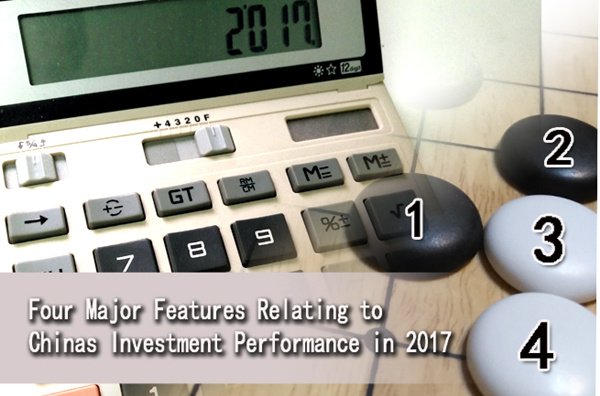Four Major Features Relating to China’s Investment Performance in 2017
Mar 19,2018

2018-1-24
By Xu Zhaoyuan, DRC
In 2017, China’s fixed asset investment growth stood at 7.2%, down by 0.9 percentage points year on year. In 2018, the growth rate of the total investment might drop to about 6.5%, and it is expected that the actual investment growth rate and its contribution to economic development might bottom out, showing the following four major features.
1. The investment growth rate is inclined to bottom out while maintaining a stable performance. From 2014 to 2017, China’s fixed asset investment growth rate stood respectively at 15.7%, 10.0%, 8.1% and 7.2% with reduced decrease of growth rate each year. Since the second half of last year, the monthly investment growth showed a continuous upward trend bolstered by private investment, which experienced a short-cycle of doubling dip before rallying up and laid the foundation for a slight rebound in 2018.
2. The investment growth rate is slower than that of the nominal GDP for the first time. After 2000, the investment growth rate was faster than that of GDP, but after 2012 their growth rate became similar with each other and eventually became the same in 2016. In 2017, their growth rate became tangibly different, the nominal GDP growth rate reached 11.2% whereas that of investment only 7.2%, 4.0 percentage points lower than that of GDP growth rate.
3. Infrastructure investment takes the lion’s share and manufacturing investment has increased steadily. With regard to investment in different sectors, the growth rate and development trend of investment in various sectors vary greatly. Among them, the investment growth of infrastructure ranks the highest, with an annual investment amount of 17.3 trillion yuan, up by 14.9% over the previous year and higher than the growth rate of total investment by 7.7 percentage points. The manufacturing industry which takes the largest share in GDP presents a moderate increase with a relatively stable and upward growth trend by a small margin. The investment growth of manufacturing industry fell to the bottom, standing at 2.8% in 2016 and since then, it remained within the range between 4% to 5%, which had already gained a pretty good momentum to bottom out.
4. Private investment in the eastern and central regions shows a sound and positive growth trend. In light of the whole nation, private investment growth rate in 2017 was lower than that of the total investment by 1.2 percentage points whereas the growth rate of private investment in the eastern region surpassed that of the total investment by 0.3 percentage points. In addition, the growth rate of private investment in the central region also exceeded that of the total investment by 0.5 percentage points. This shows that the investment growth in the eastern and central regions has gradually and mainly relied on the market endogenous investment, which will be conducive to the steady growth of the overall investment. It is estimated that the investment growth rate will continue to decline slightly in 2018, but it will not exert any downward pressure on economic development because of China’s structural optimization and the enhancement of real growth rate.














